Closing date for 2022 applications is Saturday 6th August.
The Australian Institute of Geoscientists’ Student Bursary Program was initiated to promote and support geoscience education in Australia. The Bursary Program began in 2001 to mark the 20th Anniversary of the Australian Institute of Geoscientists (AIG) and, since then, the AIG has awarded over 230 bursaries to geoscience students in Australian universities. In 2022, the AIG is again offering bursaries to Honours, Postgraduate and Third Year geoscience students.
The 2022 Bursary awards, which have values between A$1000 and A$4000, are supported by the AIG nationally, and also by the generous support of individuals and organisations, including the AIG state branches and individual AIG Members.
Eligibility criteria and guidelines for bursary applications are given on pages 1, 2 and 3. A bursary application form is included as page 4.
The AIG Student Bursary Program is open to students who, at the closing date for applications, are:
The AIG Bursary awards are generally announced and awarded in early- to mid-October each year. Applicants seeking funding for specific activities should ensure that the timing of these activities is appropriate to this schedule.
The application guidelines and form can be downloaded here.
Applicants should fill in the application form, complete with the requested signatures, and upload it in a zip file along with the documents requested in the guidelines. Applicants are also requested to fill in the fields below, so that we can confirm contact details and check we have received the relevant uploaded application documents.
AIG initiated a project in May 2021 to randomly assess announcements of Exploration Results, Mineral Resources and Ore Reserves released by ASX listed companies. The initial objective of the project, undertaken by AIG’s Complaints Committee, was to assess the level of JORC Code compliance by Competent Persons, and identify areas of concern that could be specifically targeted in professional development resources provided to Members. The project has continued in parallel with work by the JORC Committee and Parent Bodies (AIG, AusIMM and the Minerals Council of Australia – MCA) to update the JORC Code that has included a project to assess accreditation requirements for Competent Persons.
Study progress has been reported to the AIG Board regularly during the course of the study, leading the Board to recommend the release of results to Members.
The results of the study, to date, show cause for concern.
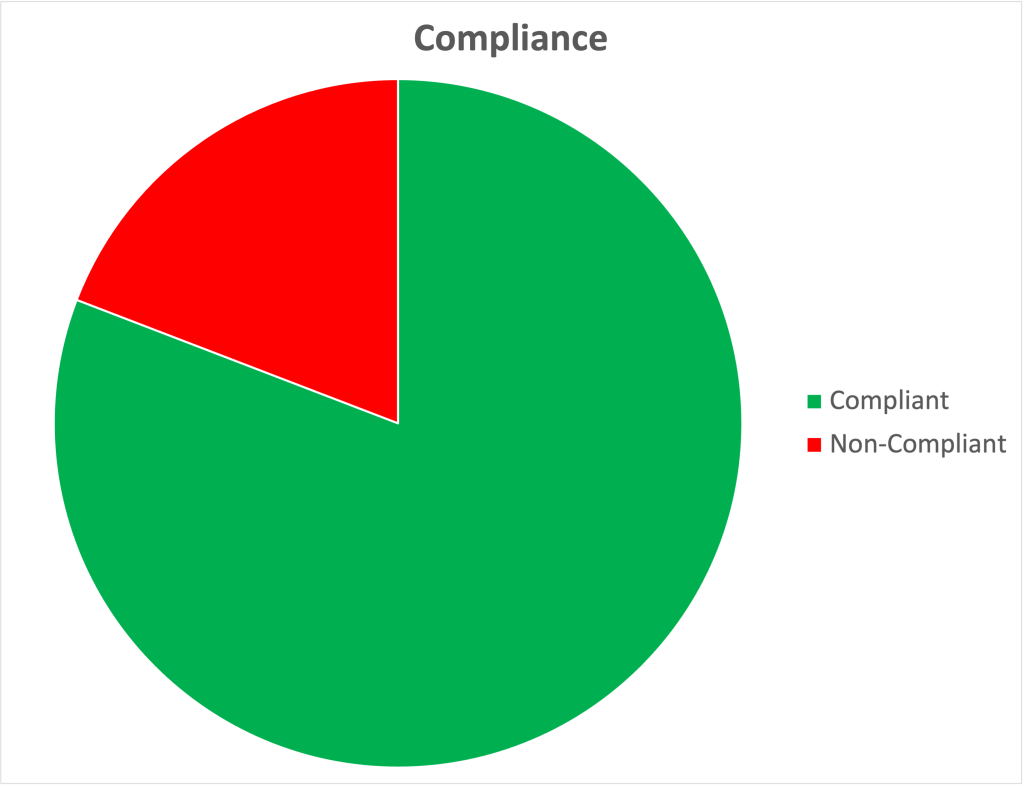
Almost one in five of the announcements reviewed was determined not to adequately comply with the JORC Code (2012).
The Complaints Committee has initiated 37 complaints processes during the review, involving complaints to ASX relating to the actions of companies, or both AIG and AusIMM members where the complaint related to reporting of information by Competent Persons.
All of the complaints relating to work performed by Competent Persons dealt with procedural issues, resolved with AIG members by contacting them and suggesting ways in which the announcement could have been improved, to better meet the requirements of the Code.
No cases resulted in disciplinary action by AIG’s Ethics and Standards Committee.
An expected, but positive aspect of the review was that the majority of members contacted in relation to issues with announcements for which they acted as Competent Persons expressed appreciation for the feedback provided, with some going on to request review and feedback of further announcements prior to their release.
Where AusIMM members were involved, a complaint was submitted for consideration by the AusIMM Professional Standards Committee.
Complaints relating to the practice of companies were referred to ASX for action, and resulted in announcements being revised and reissued by the companies involved in several cases.
The announcements reviewed covered projects in 33 countries and activities covering the full-spectrum of work covered by the JORC Code.
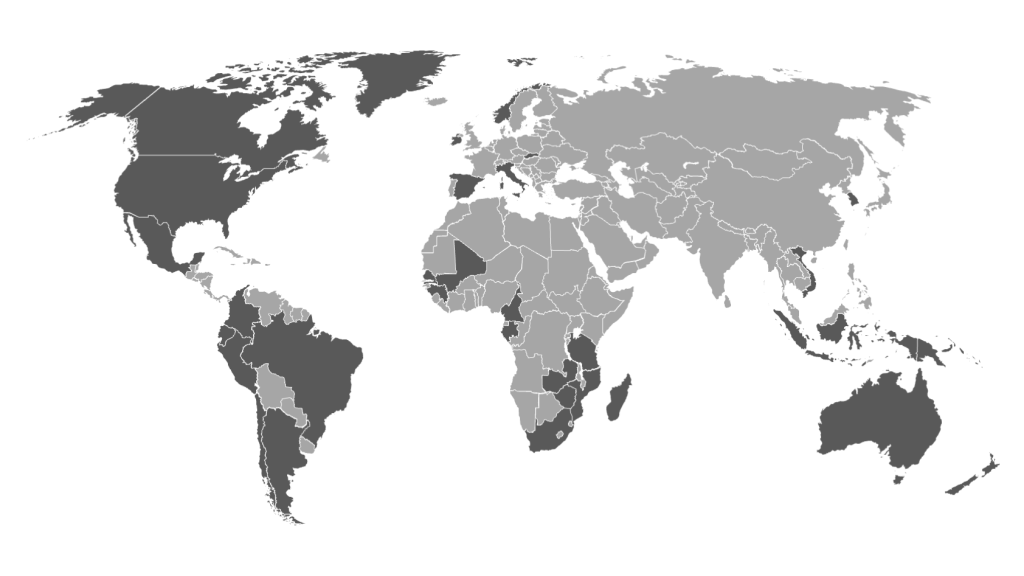
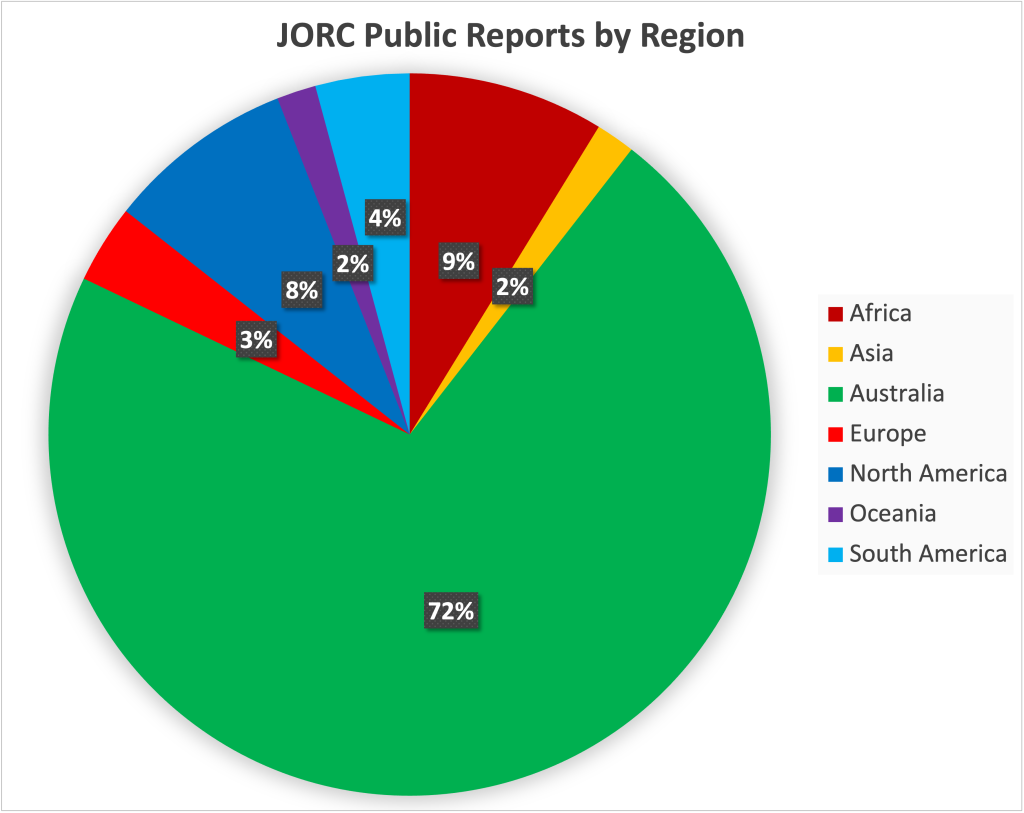
The map and accompanying pie-chart highlight the extent to which Australian-listed companies are engaged in projects both within Australia and internationally. An interesting feature of the mao and chart is the presence of Australian companies in the Americas and Africa, and the relatively low level of activity in Asia and Oceania.
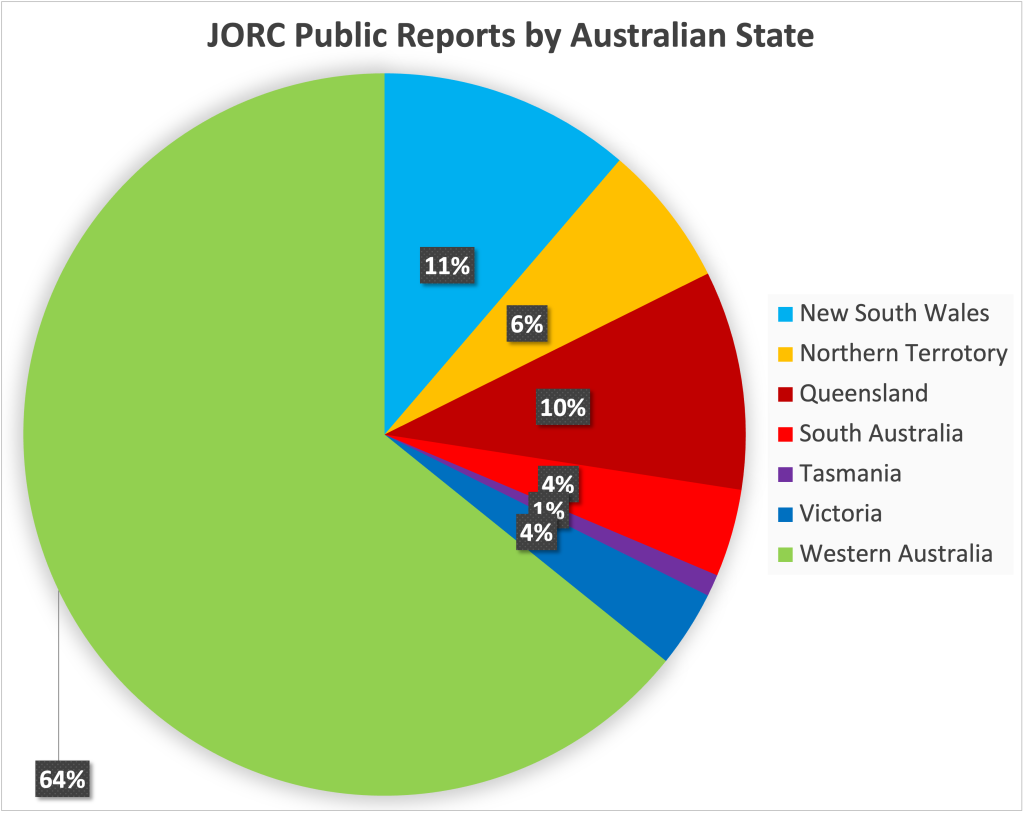
Within Australia, Western Australia accounted for almost two thirds of the public reports reviewed, followed by New South Wales (11%), Queensland (10%) and the Northern Territory (6%).
Exploration announcements (exploration plans, drilling updates etc.) account for 84% of the announcements reviewed. Mineral Resource and Ore Reserve estimates accounted for around 6%, studies (scoping, pre-feasibility and feasibility studies) 3% and metallurgical testwork results 2%.
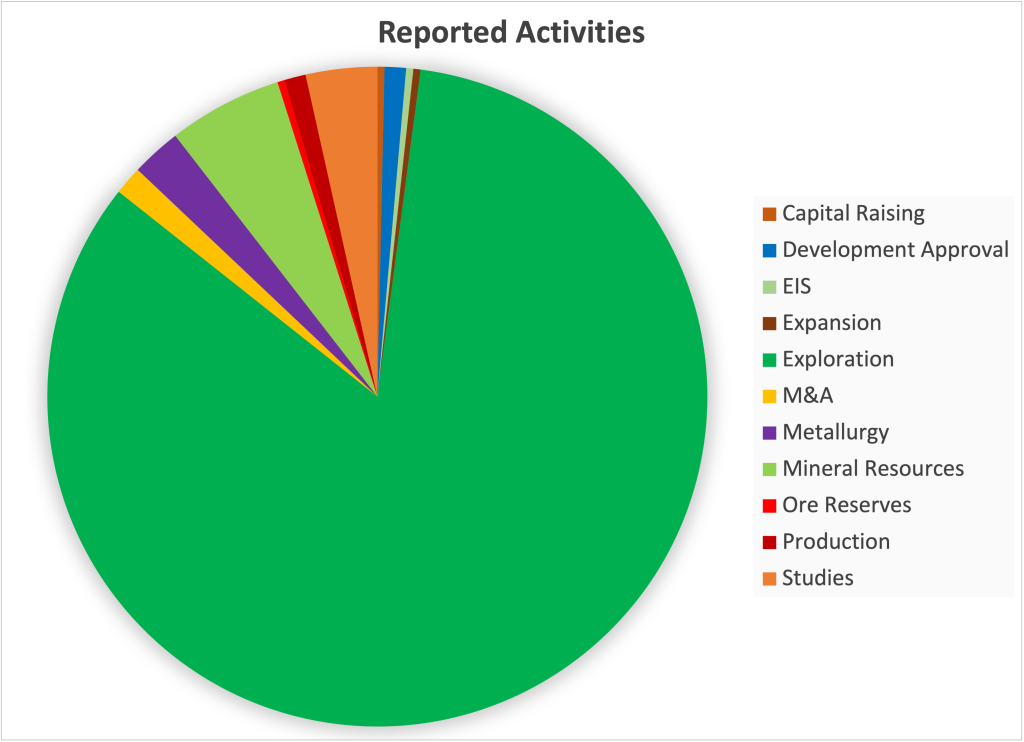
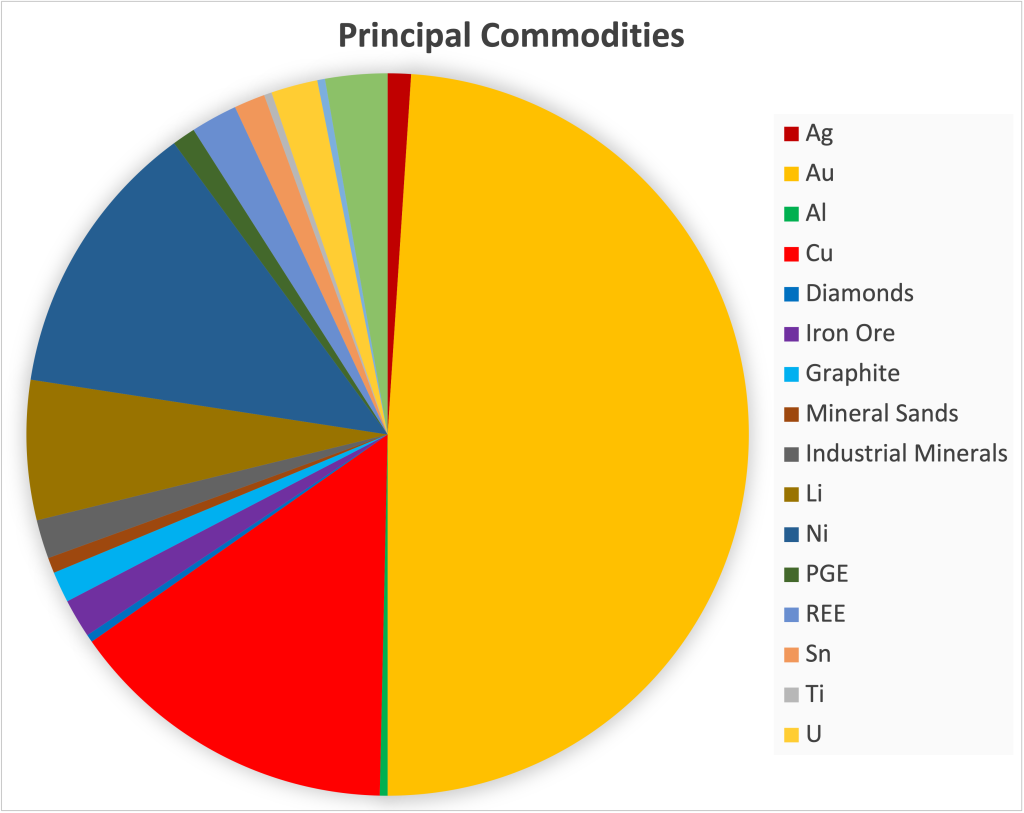
Gold was the dominant subject, accounting for just less than half of the public reports reviewed. Gold was followed by copper (15%), nickel (13%), lithium (6%) and zinc (3%).
Issues of concern identified in announcements included:
These issues potentially highlight a need for continuing education of Competent Persons and are able to be incorporated into AIG’s JORC education workshops which are continuously improved using feedback received from participants, or covered by AIG’s mentoring program which has been extended to cater for experienced in addition to early career members in recent years. Importantly, the trial revealed valuable information and is considered to highlight the value of continuing this work. Monitoring a relatively small proportion of announcements successfully identified a number of recurring issues that, when addressed, have potential to improve the standard of public reporting of Exploration Results, Mineral Resources and Ore Reserves, investor and public confidence in our profession.
Andrew Waltho
Complaints Committee
More ground will soon be available for Minerals Exploration Licence applications in an area with copper, other base metals and minerals sands potential in western Victoria.
Access to land for exploration in the Stavely Minerals Exploration Initiative area was suspended by the Victorian government in 2015.
Through the 2018 Stavely Ground Release, 11 large blocks of land with a temporary hold on minerals activity were offered to the market and six blocks were awarded.
The remaining area, which totals over 11,000 square kilometres, covering parts of the Wimmera as well as areas north and east of Hamilton and around Mortlake, became available for minerals exploration licence applications from 2 May 2022.
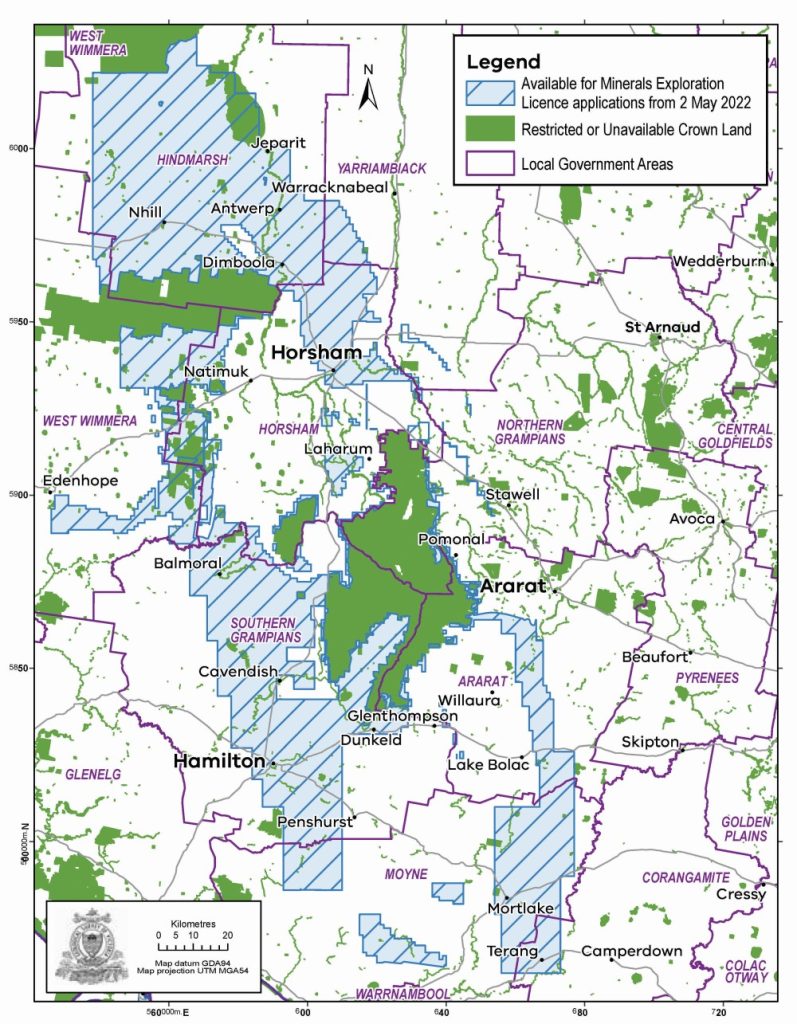
Exploration will not be permitted in national parks, wilderness parks, or state parks. Explorers must obtain consent of landholders before accessing private property.
Between May and June 2022, the Geological Survey of Victoria will continue to hold information sessions about land access landholders’ rights and opportunities should an explorer seek access to their properties.
Through the Stavely Minerals Exploration Initiative, the department has taken an integrated approach between 2015 and 2022 to ensure:
Key steps included:
The government announced that the Stavely Minerals Exploration Initiative is now effectively complete.
4 May 2022